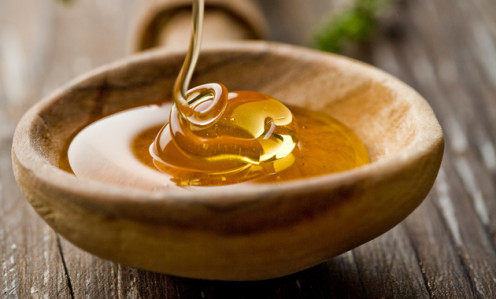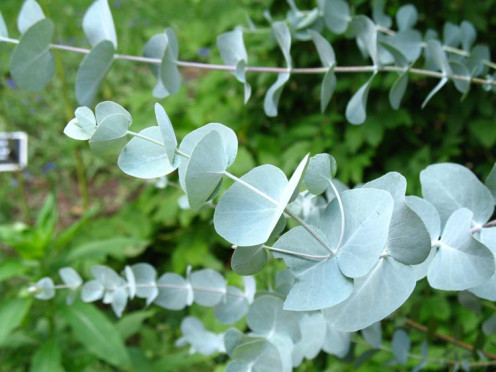- HubPages»
- Health»
- Alternative & Natural Medicine»
- Home Remedies
Natural Ways to Treat The Common Cold

A Brief History
The common cold first emerged in humans approximately 200 years ago and, according to scientists, it was originally carried by birds. Now it infects people of all ages and can contribute to the development of bronchitis, pneumonia, and a host of other debilitating illnesses that may eventually require hospitalization. Symptoms include runny nose, chest congestion, headache, and cough. The average American adult will experience the common cold between two and four times a year, with children catching far more (at approximately 12 times a year) due to their consistent contact with other children in public settings.
Nasopharyngitis Nightmare
The common cold is probably the nastiest virus out there in existence. Its ability to lay a person low for days is unparalleled, and the bad news is that there no known cure for it. Luckily, its symptoms are usually short-lived and there are certain things that you can do in order to recover more quickly.
With all of the debate centering around chemicals and unnecessary additives, some people are leaving their common cold products behind in search of more homeopathic remedies. And if you aren't yet one of those people, here are some fun facts about cold medicine to get your ball rolling.
- Because popular products such as Dayquil only mask the symptoms of a cold, people who repeatedly consume them during the course of their illness may also be experiencing potentially lethal afflictions, such as pneumonia.
- Cough medicine, including Robitussin, is one of the most abused classes of over-the-counter medication in the world. Abuse of cough medicine can lead to seizures, hallucinations, and death in long-term users (Drug Enforcement Administration, 2014).
- Studies have determined preliminary evidence to suggest that the dyes used to give cold products their colors (that deep greenish-blue hue of NyQuil) have contributed to the development of hyperactivity and ADHD in children. So if your child is ill often, these treated cold products could increase the chance of him or her developing one of these conditions (Scientific American, 2015).
- Because most over-the-counter treatments shrink swollen sinuses with a decongestant, physical reactions to the consumption of these products include insomnia, shaking of the hands and body, and heightened blood pressure- all fairly undesirable side effects.

Honey Lemon Tea
- 1 Cup Water
- 2 Teaspoons Honey
- 1 Teaspoon Fresh Lemon Juice
- 1 Teaspoon White Sugar, To Taste
Instructions
- Pour water into a mug. Add honey and heat in the microwave for 1 minute and 30 seconds. Stir in lemon juice, mixing until honey is dissolved, then stir in the sugar.
Ratings
Power Remedy #1- Honey
Honey is the oldest sweetener in the world, and ancients from several cultures used it as means of beautification. Why? Because honey is not only soothing, but it also possesses antimicrobial and antioxidant properties.
During the honey creation process, bees infuse an enzyme called glucose oxidase into the honey, which contains glucose. If the pH balance of the honey is just right, a chemical reaction ensues and the oxidase breaks down the glucose, resulting in a well-known antibacterial liquid referred to as hydrogen peroxide (Sharla Riddle, 2016).
Honey is also thick and sweet, much like the cough syrup that most of us probably drink by the bottle when we've been laid low by the common cold. These properties help break up the congestion that collects in our breathing passages and at the back of our throats, soothing soreness and relieving pressure.
It is a wonderful and soothing additive to hot tea, which also helps in breaking up chest congestion and opening the sinuses. A solution of honey and lemon juice is also known to do the same. I have included a favorite recipe of mine that is easy to make, and I've used this concoction many times to soothe a sore throat.

Eucalyptus Rub
Mix 15-20 drops of eucalyptus essential oil into a carrier oil, such as olive or coconut oil, and rub into the chest, neck, and temples. Inhale deeply and repeat as necessary.
Power Remedy #2- Eucalyptus
There are hundreds of species of eucalyptus, and it may have originated in Australia between 35 and 50 million years ago. Today, it is a popular home remedy that can be used to produce either oil or honey. According to Mountain Rose Herbs, eucalyptus essential oil promotes numerous health benefits, including migraine relief and muscle relaxation. It is also anti-viral and anti-inflammatory, and is widely used in insect repellents.
Eucalyptus oil can be applied to the skin and can be used as one would typically use a vapor rub, although diluting it in a carrier oil before applying to the skin is generally advised. It can applied on the chest, neck, temples, and even under the nose, and can be added to a steam bath or a vaporizer. It is also helpful for muscle aches and pains, and is non-toxic when applied externally. Its pleasant smell seems to promote rest and relaxation, which is essential for those who are trying to recover. It is one of my favorite scents, and I used to grow it in my garden for that very reason!
In addition to this, eucalyptus oil is a popular ingredient in many over-the-counter cold products including lozenges, cough drops, ointments, and inhalants. It is a truly versatile home remedy that is both inexpensive and effective when used to reduce the severity of symptoms associated with the common cold.

Power Remedy #3- Licorice Root
In recent studies, licorice root has been shown to pack a pretty powerful immune-boosting punch. It has been found to perform effectively against such viruses as the avian flu and SARS. It serves as an expectorant, meaning that it is particularly helpful in breaking up any accumulated congestion inside of the chest, allowing the for the body to more easily expel it through coughing (Dr. Mercola, 2016).
Licorice root is extremely versatile because there are several ways it can be used. The root itself can be eaten, and some people often do this when they feel cold symptoms beginning to develop. Although a widely-accepted homeopathic practice, it is important to run this by your doctor because the consumption of licorice may interfere with some prescription medications. According to a 2008 NBC article, some people also use natural black licorice candy to soothe the throat and ward off the impending symptoms of a full-blown infection.
Licorice root can be infused into tea or supplements. The tea version aids sore and scratchy throats, while supplements can provide anti-viral support to the consumer's immune system. On a side note, licorice root has also been known to aid digestion and soothe an upset stomach.
There are many tea recipes that incorporate ginger, orange peel, chamomile, and other ingredients that effectively reduce the bitterness of the licorice. I was once treated to such a concoction and, although I am not typically a lover of the licorice flavor, I have to admit that the tea was both delicious and soothing!

Other Natural Remedies for the Common Cold
According to BBC, the majority of Americans feel that they cannot afford to miss a day at work in order to rest and recover when they're afflicted. Rest is the cheapest, easiest, most accessible treatment for the cold, which surprisingly enough has no cure despite being one of the oldest human afflictions in existence. It boosts the immune system and allows the body to more effectively battle the cold microbes, and is also known for its ability to improve your mood. Getting lots of sleep while you have a cold is always a good idea, and rest combined with one or two of the treatments mentioned above will get you back on your feet in no time!
Poll
What is your favorite treatment for the cold?
© 2013 Jennifer








